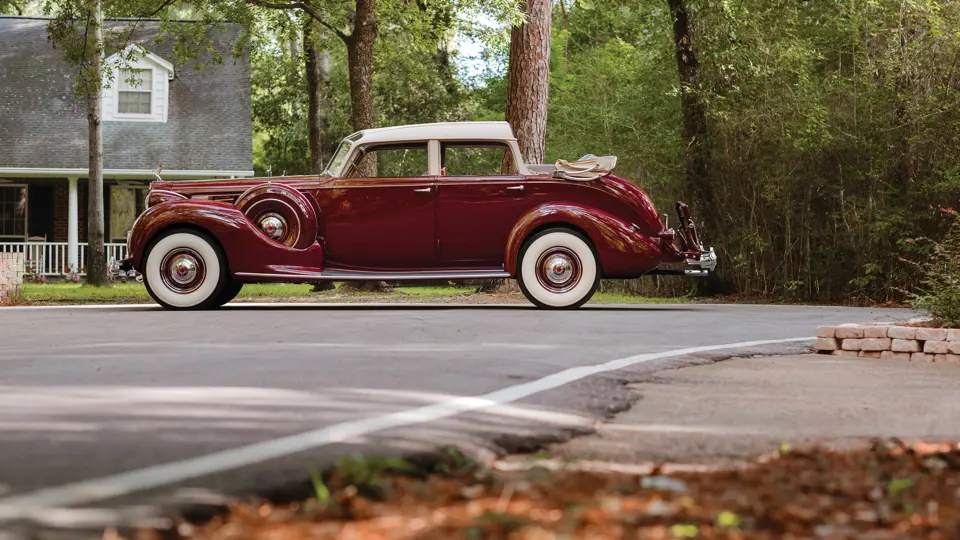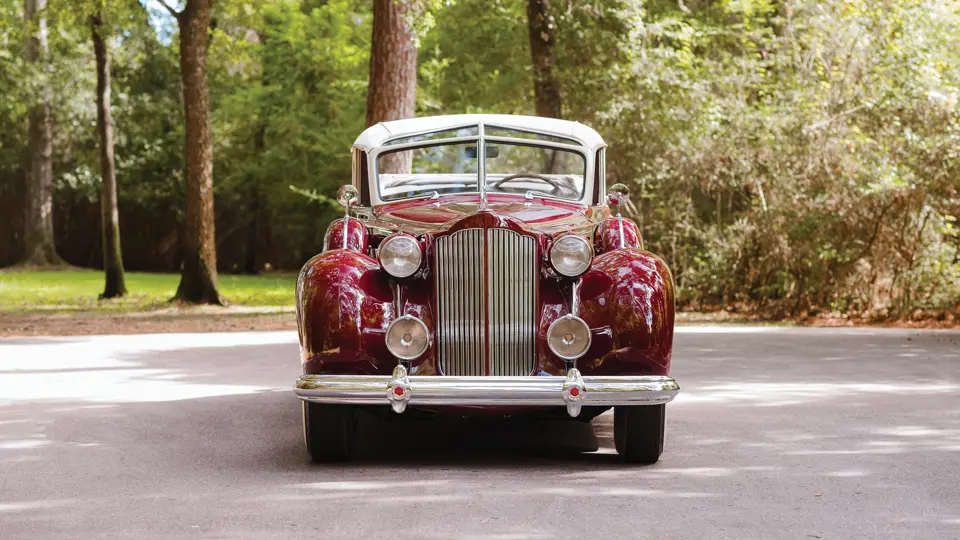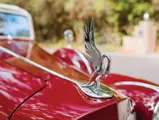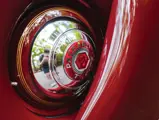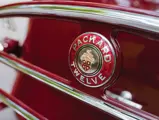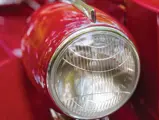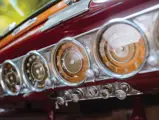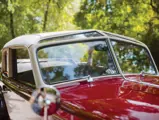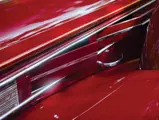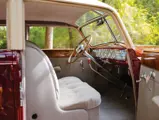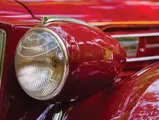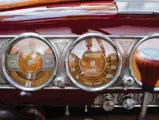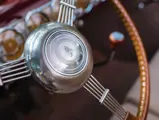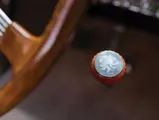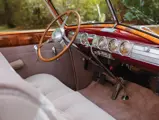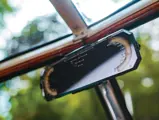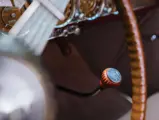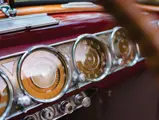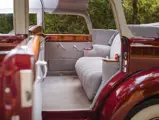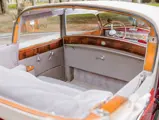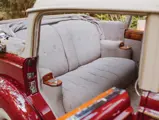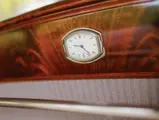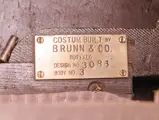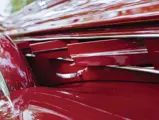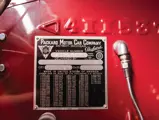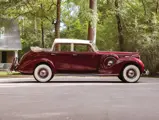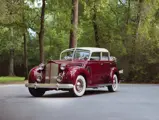
1938 Packard 1608 Twelve Touring Cabriolet by Brunn
{{lr.item.text}}
$132,000 USD | Sold
{{bidding.lot.reserveStatusFormatted}}
- The 1938 Philadelphia Auto Show car
- The third of only four built for 1938
- Delivered new to Campbell’s Soup heiress, Margaret Dorrance Strawbridge
- Formerly of the Lyon Family Collection
Packard resurrected the “Twin Six” name for a new V-12 in 1932. A 67-degree vee, the new powerplant displaced 445 cu. in., just 20 more than its 1920s namesake, but developed 75 percent more power. In 1933 the name was changed to simply “Packard Twelve,” and two years later displacement rose to 473.3 cu. in., making 175 bhp. For 1937, the Twelve was given coil spring independent front suspension and hydraulic brakes. In addition to standard bodies, Packard catalogued a number of styles from the major coachbuilders, among them Dietrich, LeBaron, Rollston, and Brunn.
In 1935, Buffalo, New York, coachbuilder Hermann Brunn designed for himself a handsome long-wheelbase landaulet type body with open chauffeur compartment, which he called a cabriolet. Added to the Lincoln catalogue custom line for 1937, it was extended to Packard in 1938. It was offered both as the All-Weather Cabriolet, with removable leather roof for the chauffeur, or Touring Cabriolet with a fixed forward roof, accented with small smoked-glass clerestory windows over the windshield. Both styles were available in Collapsible form, with a folding rear top and functional landau irons, and Non-Collapsible with a fixed rear roof and faux landau irons.
Exhibited at the 1938 Philadelphia Auto Show, this car was purchased by Margaret Dorrance Strawbridge, the daughter of John T. Dorrance, founder of the Campbell Soup Company. A sportswoman and aviator, Mrs. Strawbridge rode with the Radnor Hunt Club and was named one of Philadelphia’s six best-dressed women. She kept the car for the rest of her life. Inherited by her husband after her passing in 1953, it was later restored. Over the years it has had pride of place in the collections of Albert Sellers, Barnard Walsh, and more recently the renowned Lyon Family in California. It has since been preserved in excellent condition, and the engine has just been groomed. The body is painted in maroon lacquer, with grey cloth interior. The car bears a tan canvas-covered top, the collapsible rear section of which lowers to let the passengers ride in sunshine.
A fine example of a limited-production Packard, it is equipped with the Packard Deluxe radio, heater, custom trunk, Trippe driving lights, and dual side-mounts with metal covers. The passenger compartment is fitted with a Jaeger clock. Vacuum-assisted brakes and clutch make driving the car nearly effortless. The car’s rear-view mirror has a thermometer at the left and a manual setting altimeter at the right, as well as a distance guide to judge the distance of following cars by measuring headlight separation. A pewter image of Saint Anthony appears on the shift knob.
Brunn Touring Cabriolets were built in minuscule numbers in 1938 and 1939, no more than 10 each per year on Lincoln and Packard chassis. It is believed that there were only nine Brunn-bodied examples built between 1938 and 1939, of which this car is the third of four built in the former year. The most expensive Packard in 1938, it was some $1,500 more than the equivalent body on a Lincoln chassis or the most expensive V-16 Cadillac.
Freshly serviced and ready to show, tour, or simply enjoy, it represents a rare chance to acquire an excellent example.




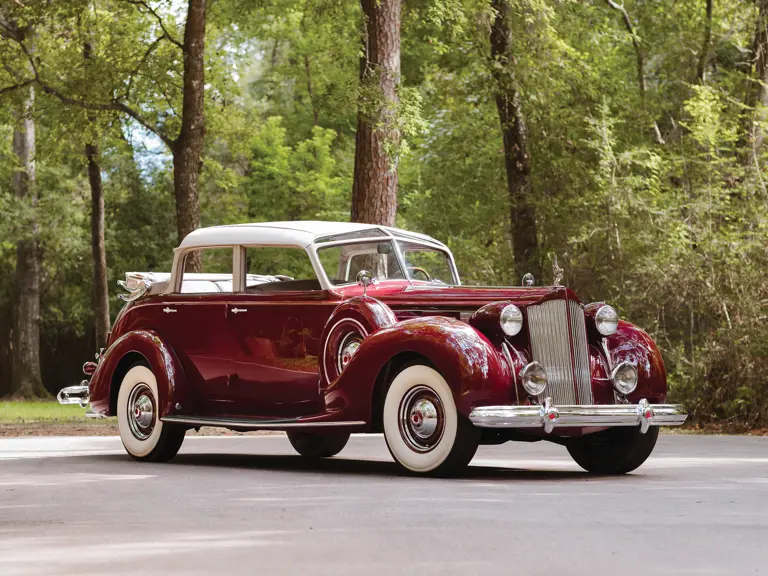
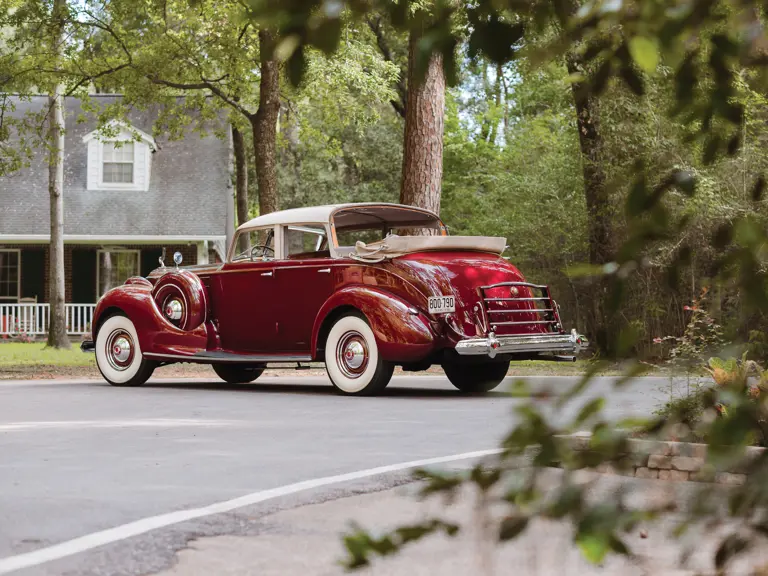

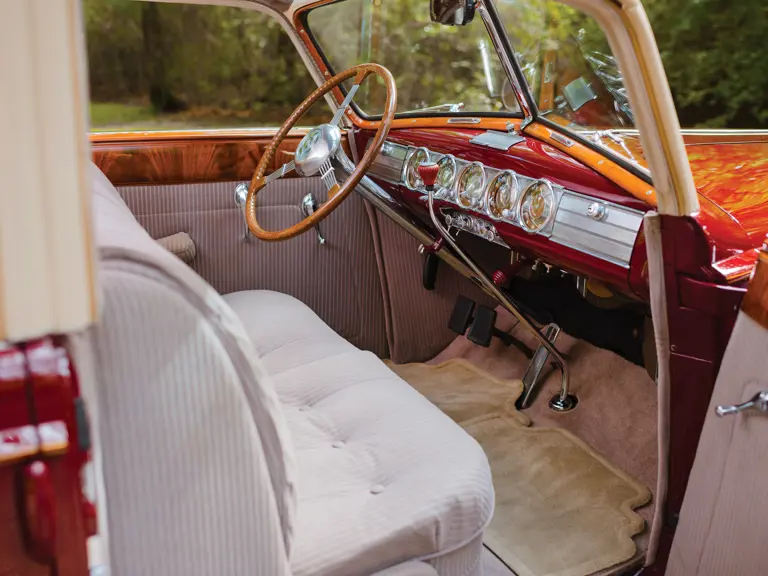


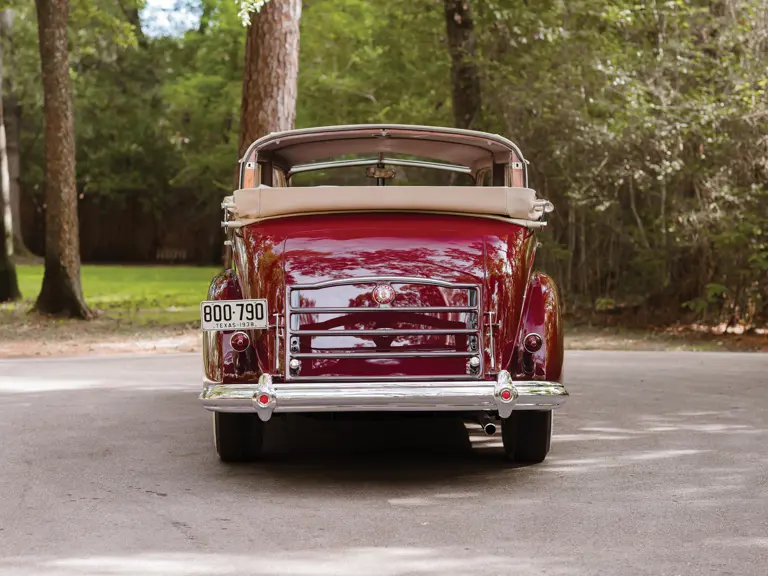

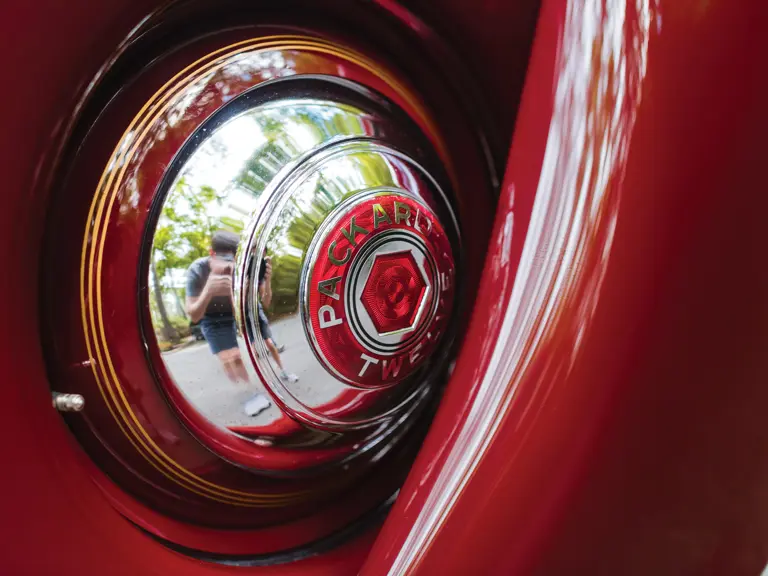
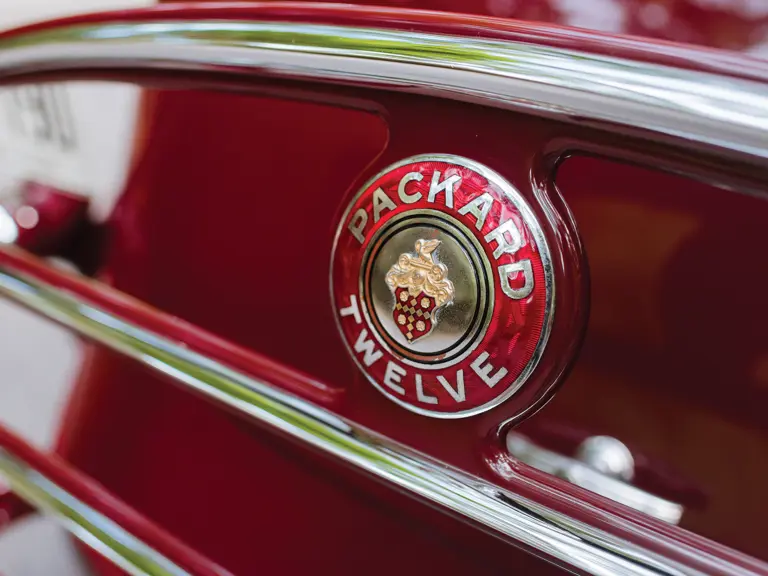
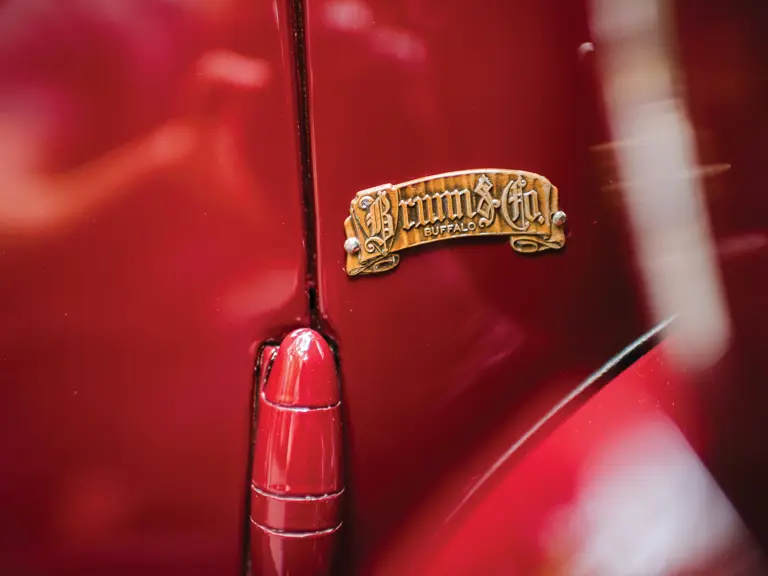





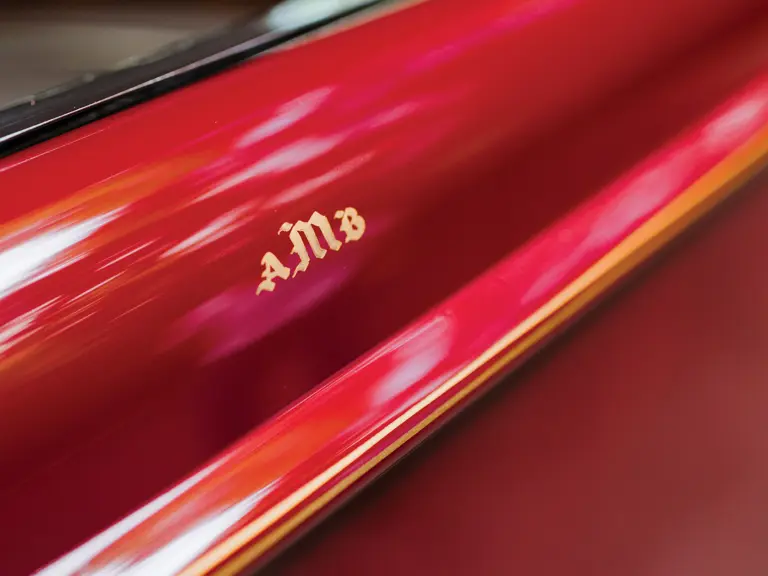
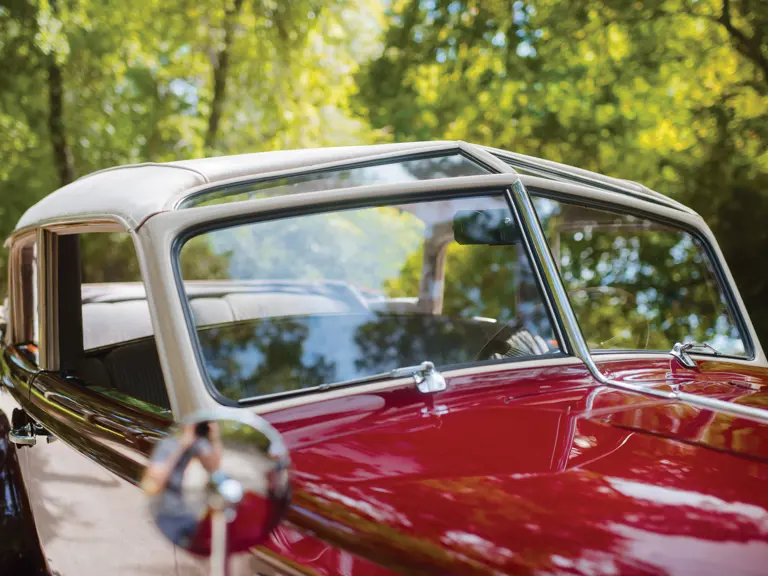
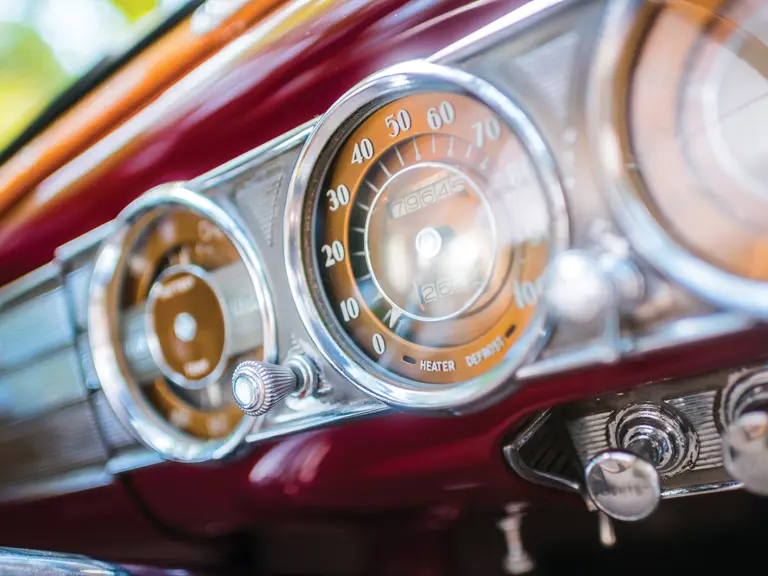
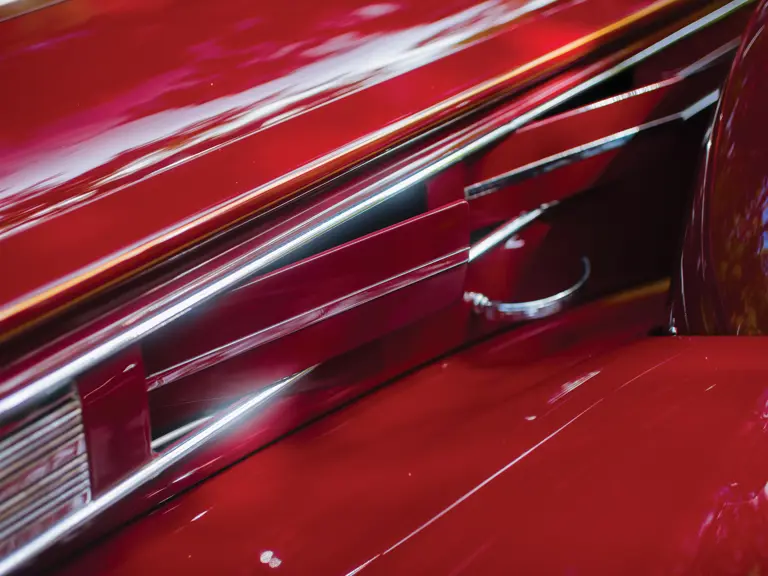
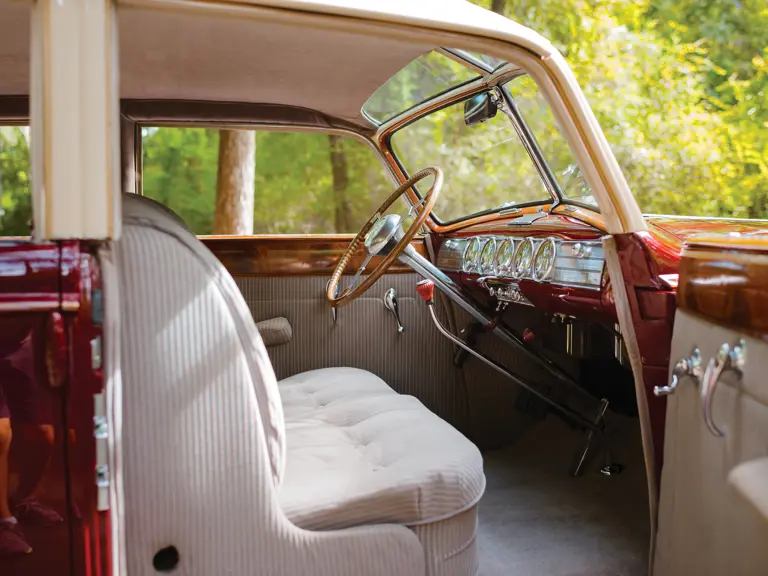
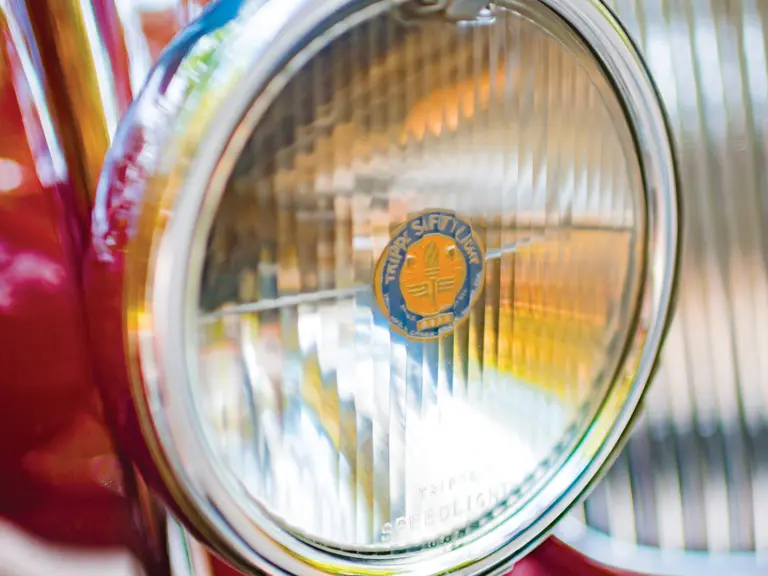
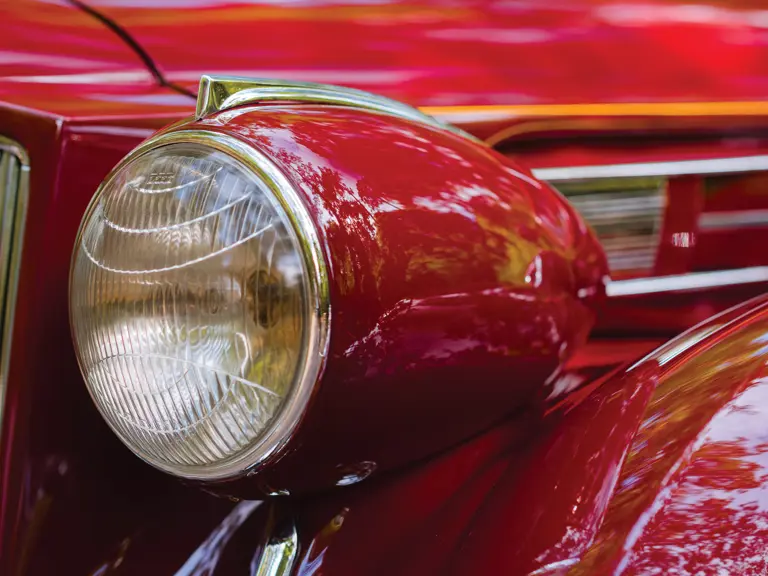
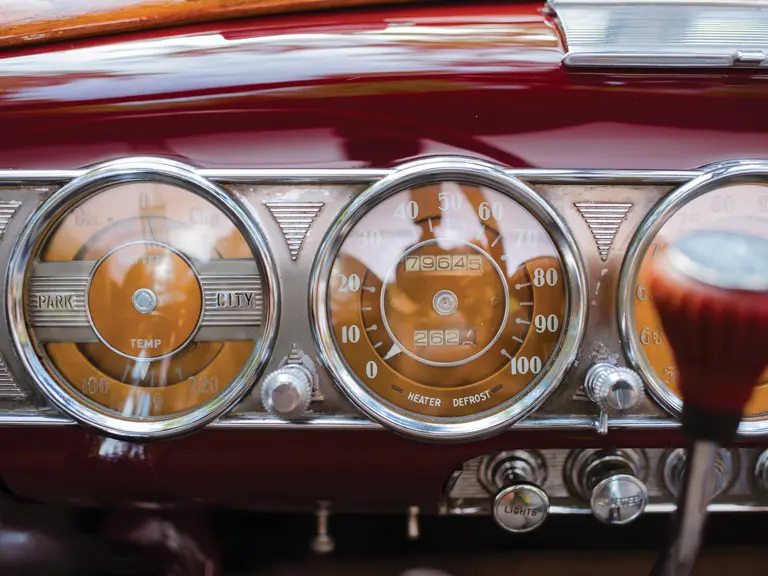


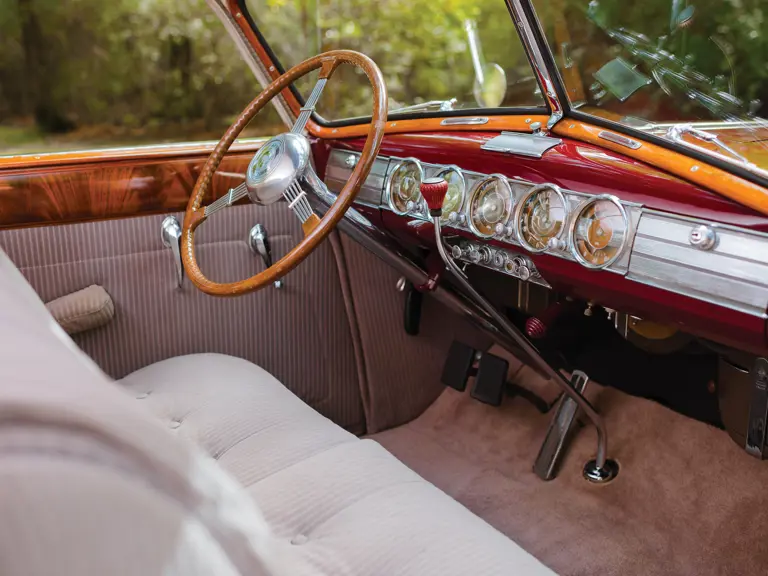
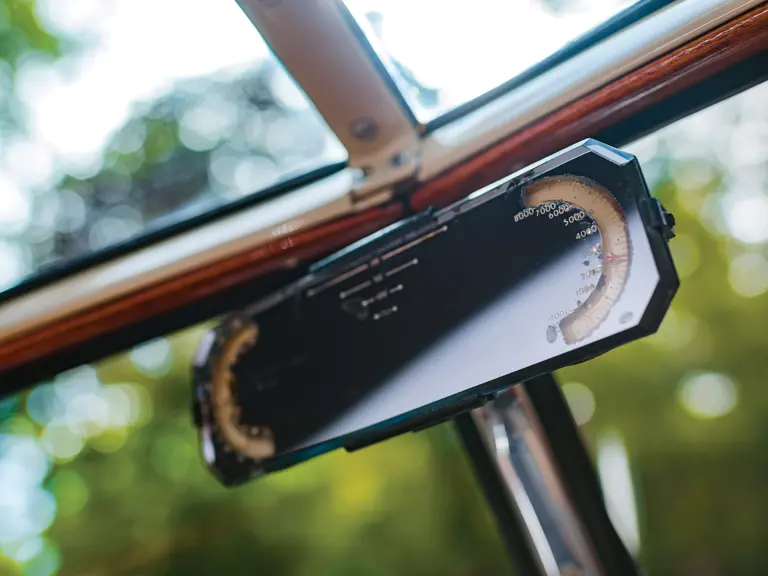
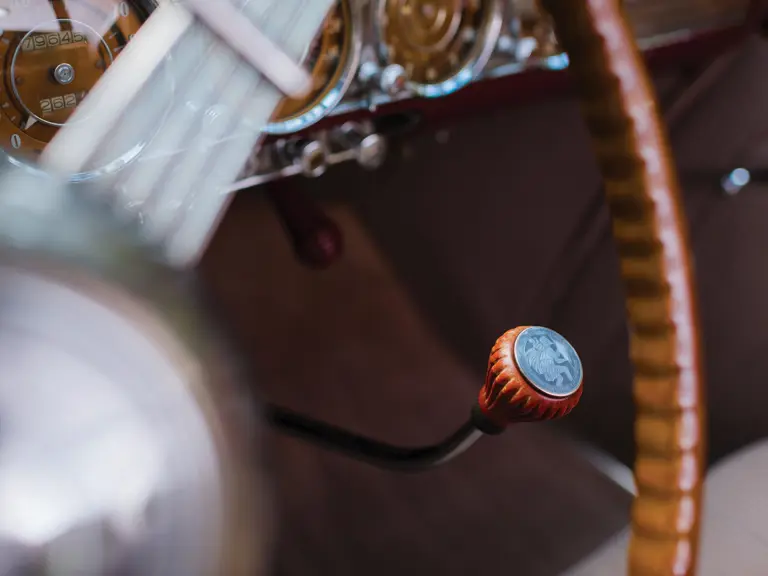
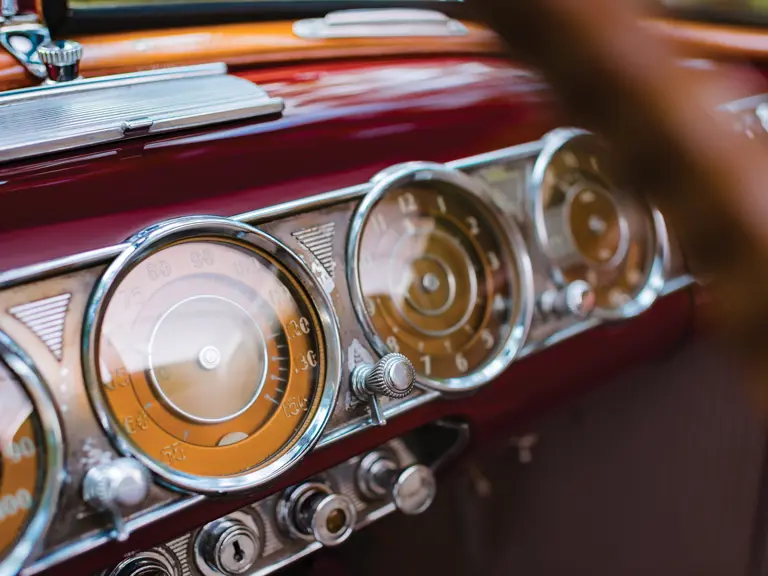

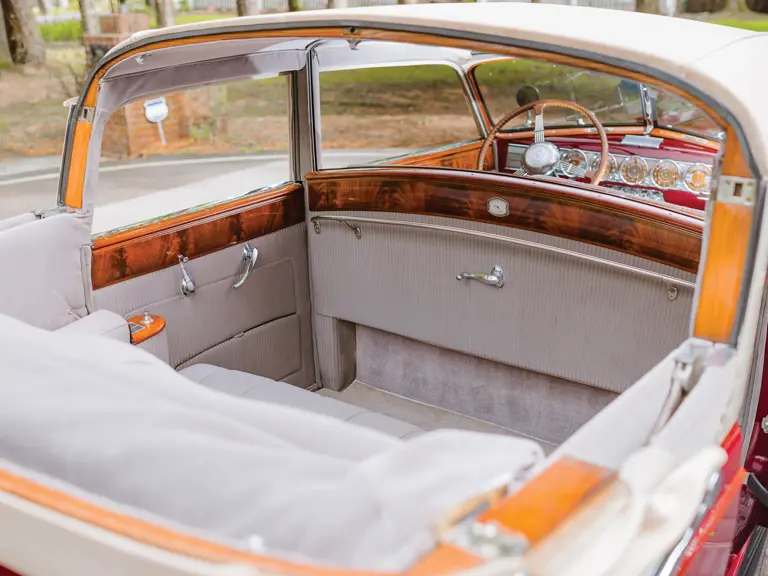

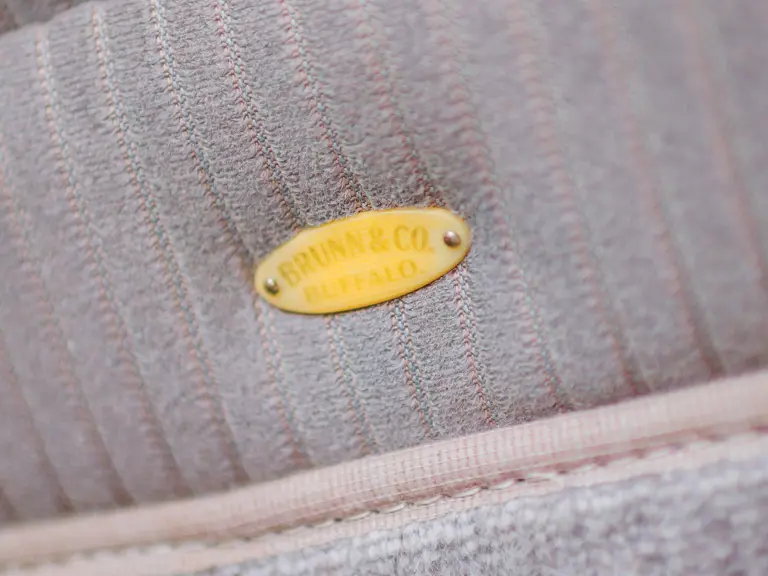
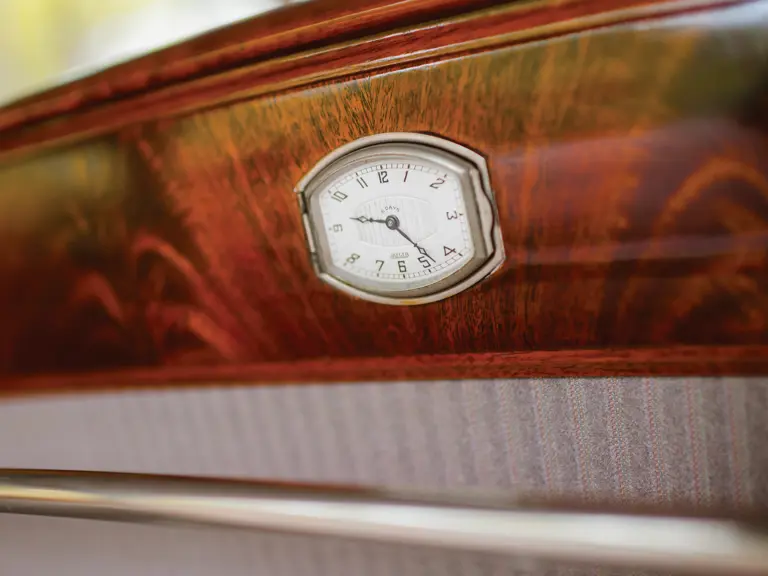

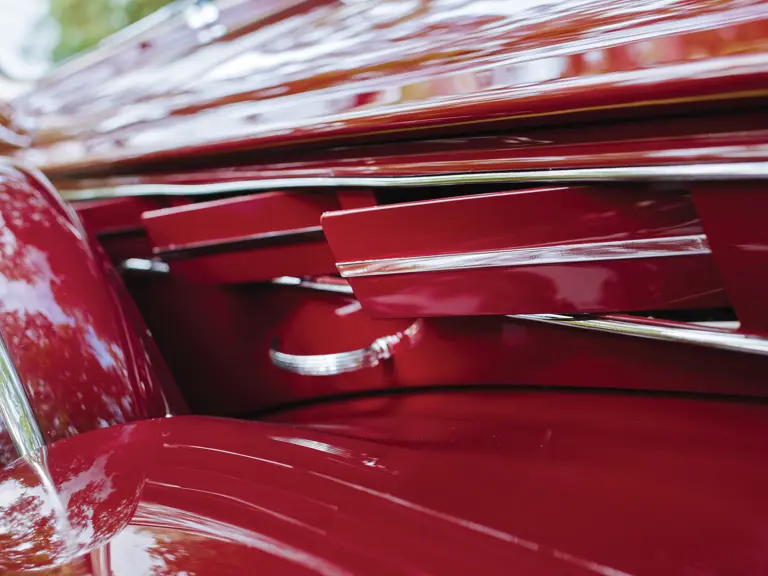

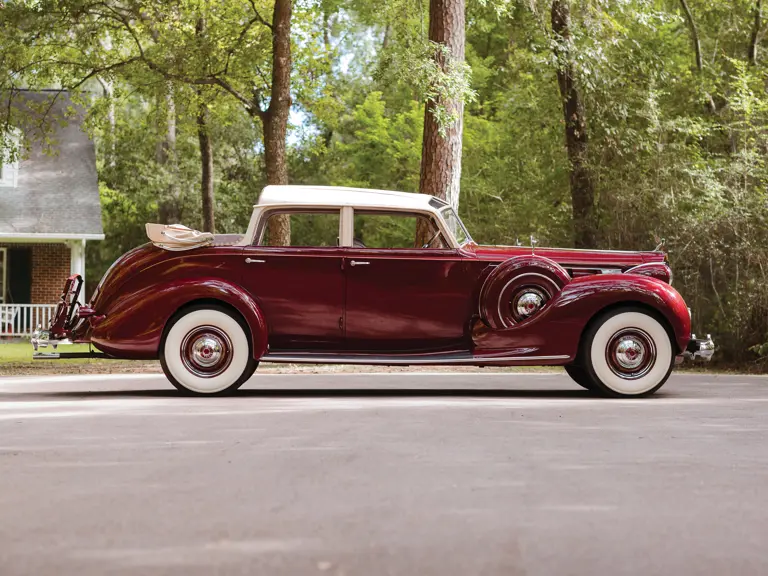
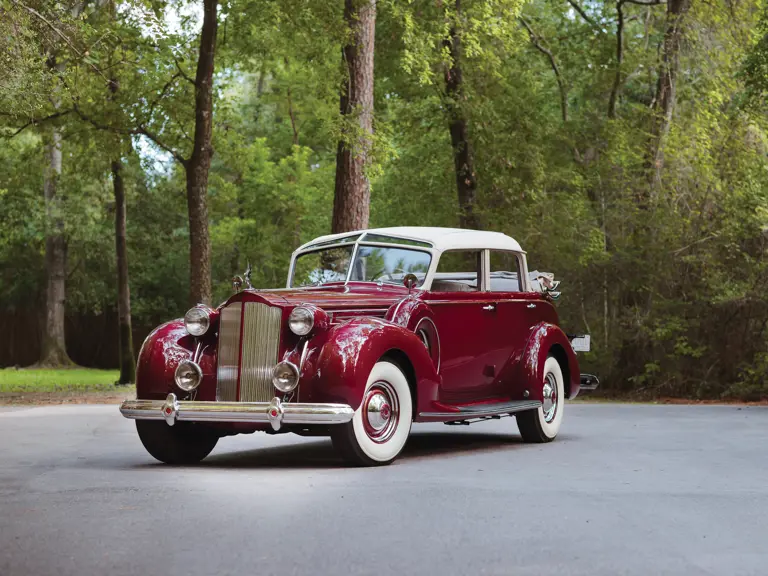
 | Hershey, Pennsylvania
| Hershey, Pennsylvania
